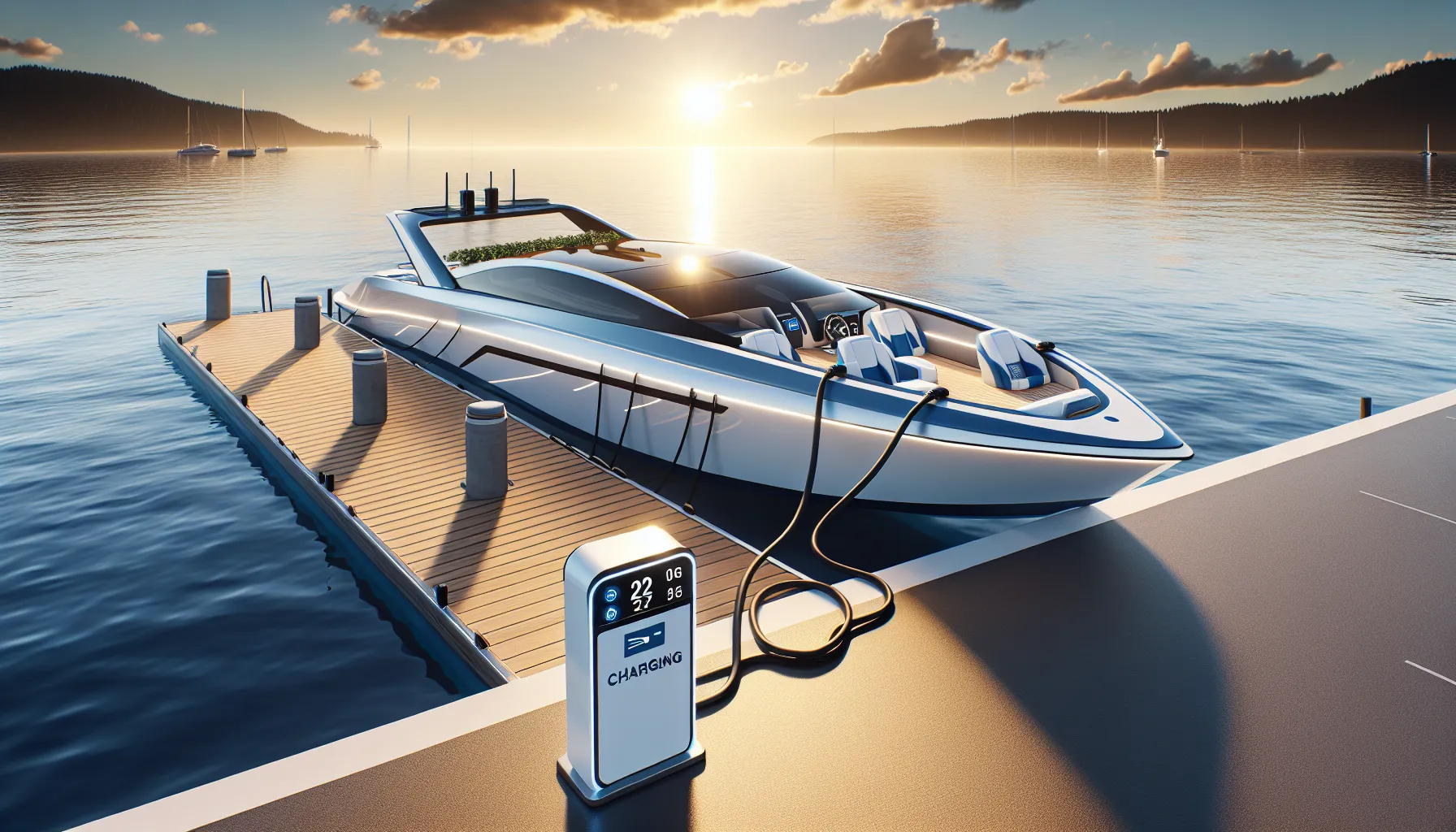Welcome to this IELTS Reading practice test focused on the topic of electric boats and their role in reducing emissions in marine transport. This test is designed to help you prepare for the IELTS Reading section while exploring an important environmental topic. Let’s dive in!
Introduction
In recent years, the maritime industry has been exploring innovative solutions to reduce its carbon footprint. One of the most promising developments is the rise of electric boats. This practice test will examine various aspects of electric boats and their potential impact on reducing emissions in marine transport.
Reading Passages and Questions
Passage 1 – Easy Text
The Emergence of Electric Boats
Electric boats are not a new concept. In fact, they have been around since the late 19th century. However, recent advancements in battery technology and growing environmental concerns have led to a resurgence of interest in electric marine propulsion. Today’s electric boats offer numerous advantages over their fossil fuel-powered counterparts, including reduced emissions, lower operating costs, and quieter operation.
One of the primary benefits of electric boats is their potential to significantly reduce greenhouse gas emissions in the marine transport sector. Traditional diesel-powered vessels are major contributors to air pollution, particularly in coastal areas and ports. By switching to electric propulsion, boats can operate with zero direct emissions, helping to improve air quality and combat climate change.
Electric boats come in various sizes and designs, ranging from small pleasure craft to larger passenger ferries and even cargo ships. While the technology is still evolving, many countries and companies are investing heavily in electric boat development and infrastructure. For example, Norway has been at the forefront of this transition, with several all-electric ferries already in operation and plans for more in the future.
Despite the promising outlook, electric boats face some challenges. Battery capacity and charging infrastructure remain key concerns, particularly for longer journeys. However, ongoing research and development are addressing these issues, with innovations such as fast-charging systems and improved energy density in batteries.
As the technology continues to advance and costs decrease, electric boats are poised to play an increasingly important role in reducing emissions and creating a more sustainable future for marine transport.
 Electric Boat Charging at Dock
Electric Boat Charging at Dock
Questions 1-5
Do the following statements agree with the information given in the passage? Write
TRUE if the statement agrees with the information
FALSE if the statement contradicts the information
NOT GIVEN if there is no information on this
- Electric boats were first invented in the 21st century.
- Electric boats produce zero direct emissions during operation.
- Norway has the largest fleet of electric boats in the world.
- Battery capacity is no longer a concern for electric boat manufacturers.
- The cost of electric boats is expected to decrease in the future.
Questions 6-10
Complete the sentences below. Choose NO MORE THAN TWO WORDS from the passage for each answer.
- Electric boats offer advantages such as reduced emissions, lower operating costs, and __ operation.
- Traditional diesel-powered vessels contribute significantly to __ in coastal areas and ports.
- Electric boats range in size from small pleasure craft to larger passenger ferries and even __.
- One of the main challenges for electric boats is the development of adequate __ infrastructure.
- Researchers are working on innovations such as fast-charging systems and improved __ in batteries.
Passage 2 – Medium Text
The Technology Behind Electric Boats
The transition to electric boats represents a significant shift in marine propulsion technology. At the heart of this revolution are advanced battery systems, which serve as the primary energy source for electric vessels. These batteries, typically lithium-ion based, have seen remarkable improvements in recent years, offering higher energy density, faster charging times, and longer lifespans.
One of the key components in electric boat propulsion is the electric motor. Unlike internal combustion engines, electric motors provide instant torque, allowing for smooth and efficient acceleration. They also operate with significantly less noise and vibration, enhancing passenger comfort and reducing underwater noise pollution that can affect marine life.
Power management systems play a crucial role in optimizing the performance of electric boats. These sophisticated systems monitor and control the flow of electricity between the batteries, motor, and other onboard systems. They ensure efficient energy use, manage battery charging, and can even integrate renewable energy sources such as solar panels to extend the vessel’s range.
Another important technological aspect is the charging infrastructure. As electric boats become more prevalent, ports and marinas are installing charging stations to accommodate them. Fast-charging technology is particularly important for commercial vessels that need to minimize downtime. Some innovative solutions include battery swapping systems and floating charging stations that can be deployed in various locations.
Regenerative braking, a technology borrowed from the automotive industry, is also finding applications in electric boats. This system captures energy typically lost during deceleration and converts it back into electricity, helping to extend the vessel’s range.
The design of electric boats often differs from traditional vessels to maximize efficiency. Hydrodynamic optimization is crucial, as it can significantly impact the boat’s energy consumption. Engineers are developing new hull designs and materials that reduce drag and improve overall performance.
As the technology continues to evolve, we are seeing the emergence of hybrid-electric systems that combine batteries with other power sources such as hydrogen fuel cells or small generators. These systems aim to address range limitations while still offering significant emissions reductions compared to conventional boats.
The integration of artificial intelligence and machine learning algorithms is another frontier in electric boat technology. These systems can optimize route planning, predict maintenance needs, and further improve energy efficiency.
While challenges remain, particularly in terms of long-distance travel and heavy cargo transport, the rapid pace of technological advancement in electric boat propulsion promises a cleaner and more sustainable future for marine transport.
Questions 11-14
Choose the correct letter, A, B, C, or D.
-
According to the passage, what is one of the main advantages of electric motors in boats?
A) They are cheaper to manufacture
B) They provide instant torque
C) They are more powerful than diesel engines
D) They require less maintenance -
What role do power management systems play in electric boats?
A) They control the speed of the boat
B) They regulate the temperature of the motor
C) They optimize energy use and battery charging
D) They navigate the boat automatically -
Which of the following is NOT mentioned as a charging solution for electric boats?
A) Fast-charging technology
B) Battery swapping systems
C) Floating charging stations
D) Wireless charging pads -
How does regenerative braking contribute to electric boat efficiency?
A) It reduces the wear on brake pads
B) It converts kinetic energy into electricity
C) It improves the boat’s acceleration
D) It cools down the electric motor
Questions 15-20
Complete the summary below. Choose NO MORE THAN TWO WORDS from the passage for each answer.
Electric boats rely on several key technologies, including advanced (15) __ systems and electric motors. These components are managed by sophisticated (16) __ systems that ensure efficient energy use. The development of appropriate (17) __ is crucial for the widespread adoption of electric boats. To maximize efficiency, engineers focus on (18) __ of the boat’s hull. Some boats use (19) __ systems that combine batteries with other power sources. The integration of (20) __ and machine learning algorithms is expected to further improve the performance of electric boats in the future.
Passage 3 – Hard Text
The Environmental and Economic Implications of Electric Boats
The adoption of electric boats represents a paradigm shift in marine transport, with far-reaching environmental and economic implications. While the potential benefits are significant, the transition also presents complex challenges that require careful consideration and innovative solutions.
From an environmental perspective, the primary advantage of electric boats is their potential to drastically reduce greenhouse gas emissions. The maritime industry is responsible for approximately 2.5% of global CO2 emissions, and this figure is projected to rise significantly without intervention. Electric propulsion, when powered by renewable energy sources, offers a pathway to carbon-neutral or even carbon-negative marine transport.
However, the environmental benefits of electric boats extend beyond emissions reduction. Noise pollution, a significant problem in marine ecosystems, is substantially reduced with electric propulsion. This reduction in underwater noise can have positive effects on marine life, particularly cetaceans that rely on sound for communication and navigation. Furthermore, the elimination of oil and fuel spills associated with conventional boats contributes to cleaner waterways and healthier aquatic habitats.
The life cycle assessment of electric boats is a crucial consideration. While they produce zero direct emissions during operation, the production of batteries and the sourcing of electricity must be taken into account. The environmental impact of battery manufacturing, including the extraction of raw materials like lithium and cobalt, is a concern that the industry is actively addressing through improved recycling processes and the development of alternative battery chemistries.
Economically, the transition to electric boats presents both opportunities and challenges. The initial capital cost of electric boats is generally higher than that of conventional vessels, primarily due to the cost of batteries. However, this is offset by significantly lower operating costs. Electric motors have fewer moving parts, reducing maintenance requirements and associated costs. Moreover, electricity is generally cheaper than diesel fuel, especially when considering the volatility of oil prices.
The economic viability of electric boats is closely tied to advancements in battery technology. As battery costs continue to decline and energy density improves, the total cost of ownership for electric boats is becoming increasingly competitive. This trend is particularly evident in short-range applications such as ferries and water taxis, where the benefits of electric propulsion are most pronounced.
The transition to electric boats also has broader economic implications. It is driving innovation and creating new job opportunities in fields such as battery technology, electric propulsion systems, and charging infrastructure. Coastal communities that invest in electric boat infrastructure may benefit from improved air quality, potentially boosting tourism and quality of life for residents.
However, the economic transition is not without challenges. The shift away from fossil fuels will impact traditional maritime industries and supply chains. There is a need for significant investment in new infrastructure, particularly charging stations at ports and marinas. Furthermore, the skills gap in the workforce needs to be addressed, with training programs required to equip workers with the necessary expertise in electric propulsion systems.
The regulatory landscape is also evolving to accommodate and encourage the adoption of electric boats. Many governments are implementing stricter emissions standards for marine vessels and offering incentives for the adoption of electric propulsion. These policies play a crucial role in shaping the economic viability of electric boats and driving industry-wide change.
In conclusion, the environmental and economic implications of electric boats are multifaceted and interconnected. While the potential for emissions reduction and operational cost savings is clear, realizing these benefits requires overcoming technological, infrastructural, and regulatory challenges. As the technology continues to mature and costs decrease, electric boats are poised to play an increasingly important role in creating a more sustainable and economically viable future for marine transport.
Questions 21-26
Complete the table below. Choose NO MORE THAN THREE WORDS from the passage for each answer.
| Aspect | Benefit of Electric Boats | Challenge or Consideration |
|---|---|---|
| Emissions | Potential for (21) __ marine transport | Life cycle assessment including battery production |
| Marine Life | Reduction in (22) __ | – |
| Water Quality | Elimination of (23) __ | – |
| Economic | Lower (24) __ | Higher initial (25) __ |
| Workforce | Creation of new job opportunities | Addressing the (26) __ |
Questions 27-30
Choose FOUR letters, A-H. Which FOUR of the following are mentioned in the passage as factors influencing the economic viability of electric boats?
A) Government regulations
B) Tourism trends
C) Battery technology advancements
D) Shipbuilding techniques
E) Oil price volatility
F) International trade agreements
G) Charging infrastructure development
H) Maritime insurance costs
Questions 31-35
Do the following statements agree with the claims of the writer in the passage? Choose
YES if the statement agrees with the claims of the writer
NO if the statement contradicts the claims of the writer
NOT GIVEN if it is impossible to say what the writer thinks about this
- The maritime industry’s contribution to global CO2 emissions is expected to decrease naturally over time.
- The production of batteries for electric boats has no negative environmental impact.
- Electric boats generally have lower maintenance requirements compared to conventional vessels.
- All coastal communities will benefit economically from investing in electric boat infrastructure.
- Government policies play a significant role in promoting the adoption of electric boats.
Answer Key
Passage 1 – Easy Text
- FALSE
- TRUE
- NOT GIVEN
- FALSE
- TRUE
- quieter
- air pollution
- cargo ships
- charging
- energy density
Passage 2 – Medium Text
- B
- C
- D
- B
- battery
- power management
- charging infrastructure
- hydrodynamic optimization
- hybrid-electric
- artificial intelligence
Passage 3 – Hard Text
- carbon-neutral
- noise pollution
- oil and fuel spills
- operating costs
- capital cost
- skills gap
- A, C, E, G
- YES
- NO
- YES
- NO
- NO
- YES
- NOT GIVEN
- YES
Conclusion
This IELTS Reading practice test on electric boats and their role in reducing emissions in marine transport covers a range of topics from basic concepts to more complex environmental and economic implications. By working through these passages and questions, you’ve not only practiced your reading skills but also gained valuable knowledge about an important environmental issue.
Remember, success in the IELTS Reading test comes with practice and familiarity with various question types. Keep practicing with diverse topics and question formats to improve your skills. Good luck with your IELTS preparation!
For more IELTS practice materials and tips, check out our other resources on IELTS.NET.


